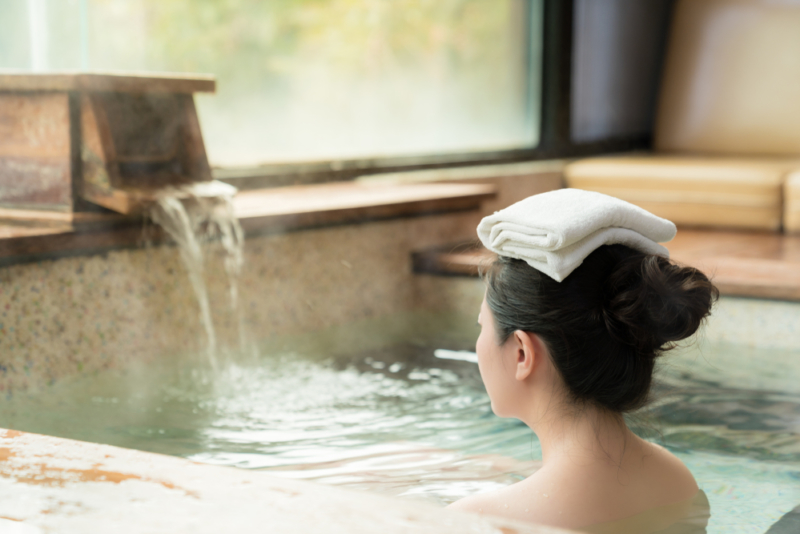To many non-Japanese people, the idea of taking a bath with a bunch of strangers may seem more than a little awkward. However, this mentality will keep you from experiencing one of the most relaxing and uniquely Japanese traditions out there: sento. This article goes through what a sento is, how it differs from onsen, how to actually visit and use a sento, and everything else involved with it. By the end, hopefully you’ll have overcome your mental barriers enough to give this amazing part of Japanese culture a try!
Sento: A Remnant of Japan’s Edo Period Culture
■ What Is a Sento?
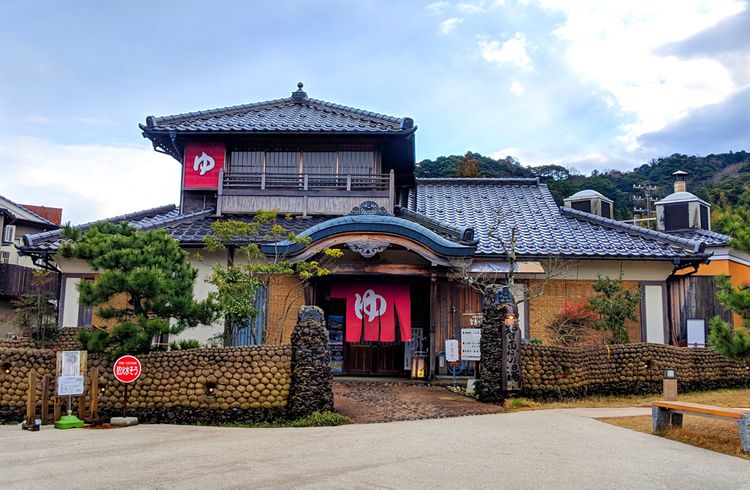
Sento (銭湯) refers to public Japanese bath houses. They are a common sight in Japan and can usually be spotted by their front curtains which sport the Japanese character ゆ (hot water/bath in English).
Sento are fairly utilitarian in design, with usually only a lobby, changing room, shower area, and separate bathing area. There are, however, larger sento called “super sento” with more to offer, such as restaurants, saunas, and even lounge rooms complete with massage chairs. These super sento are almost like amusement parks, and fittingly, often come at a higher price.
■ The History of Sento in Japan
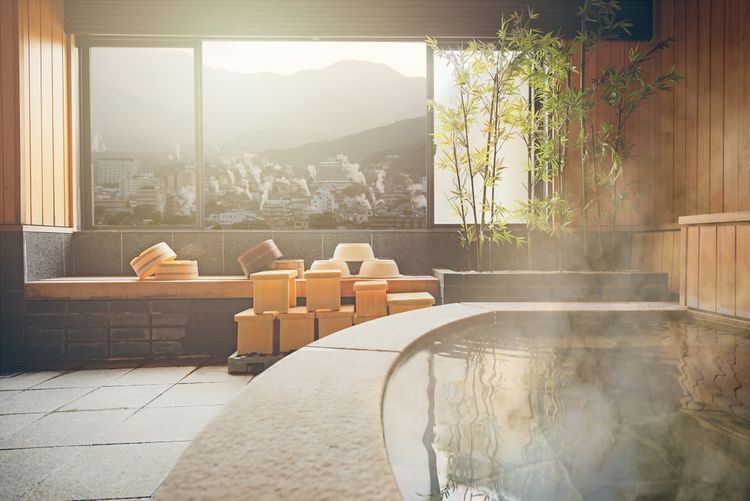
It is said that communal bathing was first introduced by China to Japan in the 6th century. At the time, it was considered a Buddhist practice and was believed to be able to cleanse a person of illnesses and other bad things. At first, only priests would use these baths. As time passed and word of how great they were spread, commoners and eventually even nobles began to flock to bath houses.
It wasn’t until right after World War II, however, when sento exploded in popularity. Due to scarce resources, many of the homes then did not have their own bath, so the Japanese found it necessary to use sento to keep themselves clean.
Today, due to the proliferation of private baths and showers at homes, sento are actually dwindling in both number and popularity.
■ Why It’s Worth Visiting a Sento
So, if sento are slowly becoming relics of the past, why should you try one?
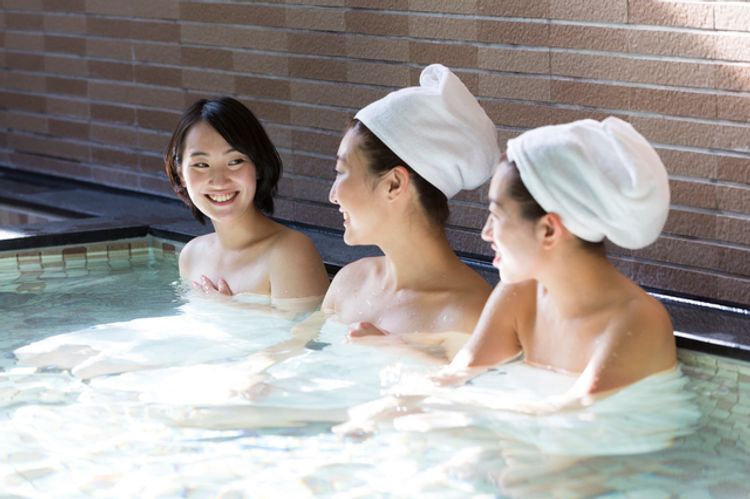
Perhaps the biggest reason why anyone should visit a sento is because they provide an interesting insight into Japanese culture. Visiting a sento is a communal activity where everyone gets naked around each other, and that nakedness lends itself towards honesty. While soaking in a sento, you will get to know and understand the locals a lot better than you might elsewhere. It is a truly humbling experience that needs to be experienced at least once in your life.
Sento is also one of the most affordable cultural activities you can try in Japan. They are considered public facilities, so their entrance fees are subsidized by the government. In Tokyo, for example, the adult price is set at an incredibly reasonable 470 yen. A single meal in Tokyo normally costs around twice as much!
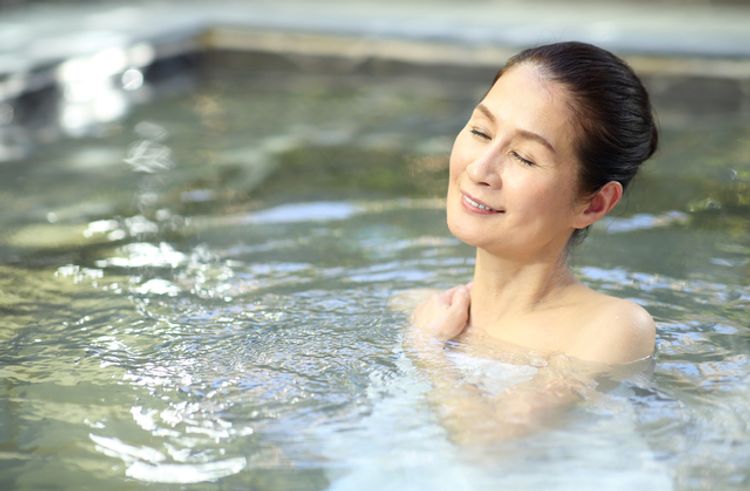
Soaking in a sento also comes with several health benefits. The water is normally set to a rather warm 42°C/107.6°F, which is hotter than the bathwater at home. This heat helps reduce fatigue, rejuvenate your spirit and body, and even improve metabolism. You can truly relax and wipe away your daily troubles and concerns at a sento.
Some customers even use sento as budget accommodation! This is especially true for super sento, as they are often open 24 hours a day, have areas where you can take a snooze, and even have indoor restaurants in case you get a little peckish. If you’re looking for really cheap accommodation, sento could be an interesting option to explore.
What’s the Difference Between Sento and Onsen?

The main difference between the two is that onsen (hot spring) water comes from natural geothermal sources, and may contain minerals that may help your health in various ways. The water at sento is typically just hot tap water. Sento facilities will, however, try to enhance the bathwater by adding bathing salts or powders, herbs, and even sake.
Another difference is that onsen are often a lot more expensive as they’re not considered public facilities by the government. Entry to an onsen often costs at least 1,000 yen, while sento can run anywhere from 350 to 470 yen, depending on the prefecture.
Location is also another difference. Many onsen are located near geothermal water sources, while you can find sento literally anywhere as they don’t rely on these sources for water. So, even if you can’t go all the way to a hot spring village, you can still experience the wonders of communal bathing at a sento.
How to Use Sento
■ What to Prepare in Advance
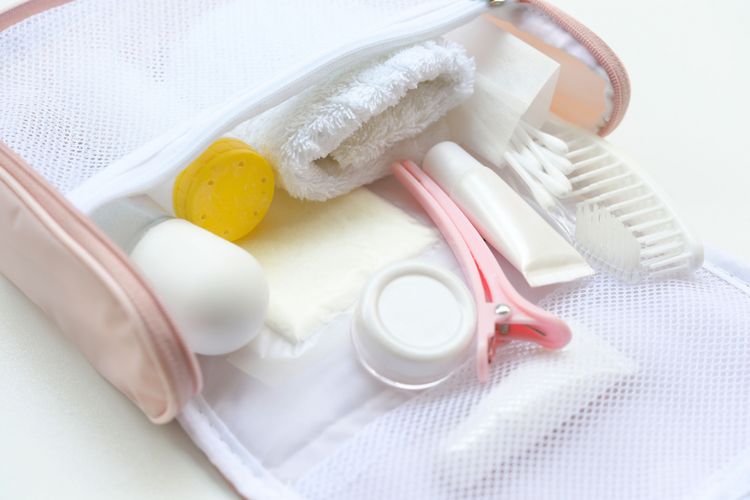
Here is a basic list of everything you should need for any sento visit:
- Clothes to change into
- Large towel
- Washcloth
- Hair tie if you have long hair
- Enough money to pay the admission fee
Don’t feel like bringing anything? No worries, most sento let you buy or rent towels and washcloths. Also, while soap and shampoo normally come free, you can still bring your own if that’s your preference.
Just one word of caution: avoid bringing too much money or taking your valuables with you. Not all sento will have lockers for you to keep your valuables. Even if they do, these lockers are normally placed inside changing rooms where there’s unlikely to be security cameras to catch thieves, so it’s important to play it safe.
■ The Process: Entering a Sento for the First Time

Enter the sento facility and you’ll find a front desk and/or vending machine. If there is a vending machine, buy an admission ticket or token through it. Otherwise, pay your entry fee to the person manning the counter.
Next, you’ll need to put your shoes away. You’ll normally find shoe lockers all around the lobby, so pick one, put your shoes in, and bring the key with you. Note that some have slippers that you trade your shoes for, while others don’t.
From there, you’ll have to enter either the men’s or women’s section. If you’re male, look for 男, and if you’re female, look for 女. Some sento will also have signage that should make this pretty obvious. Children under a certain age can accompany either of their parents to the baths.
■ The Process: Facing the Changing Room

One thing you’ll notice about the changing room is that it’s completely open. You are expected to undress in front of everyone and put your belongings in a locker or cubby.
If you have some valuables and there’s nowhere with a lock for you to put them in, you can always entrust them to the staff at the front desk beforehand.
■ The Process: Shower Before You Bathe

Unlike Western-style baths, the sento is not actually used to wash your body. This is, instead, the purpose of the shower area. Within the shower area, there are faucets (and sometimes showerheads) lining the walls in addition to small stools and buckets.
Grab a stool and bucket, find an available space with a faucet, have a seat, and wash your body thoroughly. You may even take the opportunity to shave at this juncture if you wish to do so!
Only once you are squeaky clean should you head into the bathing area. Just make sure to put everything back in its proper place before you run to the baths.
■ The Process: Time to Soak in the Baths!

Most sento facilities will have several types of baths available as well as sauna rooms. It is not uncommon to see Japanese locals switch between these, going from the hot water bath to the cold one, then the sauna, and then back to the hot one, all while rinsing themselves off in between at the shower area. Why not give it a try yourself? You might find it more relaxing than you think.
There’s usually signage to indicate the temperature of the baths: 低温 (tepid), 中温 (warm), 高温 (hot). While you might feel inclined to soak in the hot water baths, keep in mind that the bathwaters at sento are usually hotter than what you’d find at home, so it may be hotter than your expectations! In fact, we strongly recommend not spending too much time soaking, as it might cause lightheadedness. You might also want to drink some water before entering the bath area to prevent this.
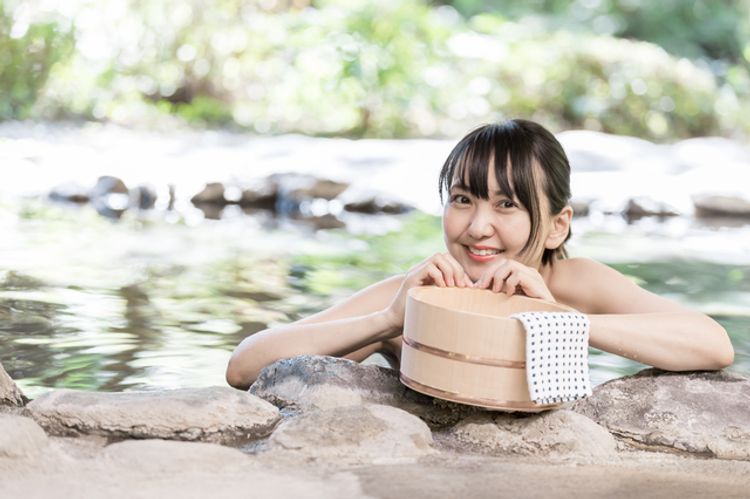
Please also make sure to follow the basic sento etiquette while you’re there. Mainly:
- Don’t wear towels to the bath. It’s a bit embarrassing to be naked in front of others, but realize that nobody is really paying attention to you.
- Similarly, bathing suits are not allowed.
- You can bring a washcloth, but don’t actually dip it into the bath. Instead, place it to the side or on your head. If it does fall into the bath by accident, wring it out outside of the bath.
- If you have long hair, keep it tied up!
- Don’t submerge your head into the bath.
- Don’t swim in the bath. You’re meant to soak, not swim.
- Do not wash your clothes or underwear in the baths (as well as in the showers or anywhere in the facility, really).
- If you use the sauna, make sure to rinse yourself off at the shower area before using any of the other baths.
Some of these rules might seem strange, but they’re all to keep the bath area and bathwaters hygienic, so please do your best to follow them.
■ The Process: After Your Soak

A traditional after-bath practice that many people still follow today in Japan is to grab a bottle of milk from a vending machine and chug it down! You’ll find flavored milk such as coffee or strawberry, and of course regular milk to purchase as well. Give it a try! You might find it surprisingly refreshing.
From there, you can explore the rest that the sento has to offer or head home. Many sento have lounge areas with massage chairs and tabletop games like foosball, so you can spend even more time unwinding there. Other larger ones have restaurants, spas, and many other types of entertainment. The sento is your oyster, so give everything a good go!
Our Top Sento Recommendations in Tokyo

■ Midoriyu: Enjoy a Soak While Admiring a Gorgeous Depiction of Mt. Fuji
Midoriyu is located in Meguro Ward, about a 7-minute walk from Jiyugaoka Station on the Toyoko Line. This classic bathhouse has been in operation since 1957, and boasts beautiful depictions of Mt. Fuji. It even has an attached art gallery and tea room. Even better, tattoos are accepted here!
| Name | Midoriyu |
|---|---|
| Opening hours | 1:00 pm – 10:00 pm |
| Closing days | Thursday |
| Price | [Admission Fee] Adults (over 15): 470 yen Middle School Students (13-15): 300 yen Elementary School Student (6-12): 180 yen Preschool Children: 80 yen [Sauna Fee] 200 yen |
| Address | 2-7-14, Midorigaoka, Meguro-ku, Tokyo 東京都目黒区緑が丘2-7-14 Google Maps |
| Access | 7-minute walk from Jiyugaoka Station |
| Website (Japanese) | http://midoriyururi.com/ |
| Website (English) | http://midoriyururi.com/publics/index/67/ |
| Other | *Toiletries including soap and shampoo are not provided. You can buy or rent them at the sento. |
■ Daikokuyu: Onsen Water at Sento Prices
Daikokuyu is a sento located close to the Sumida River, only a 6-minute walk from Oshiage Station, and 10 minutes from Tokyo Skytree. This sento has been in operation since 1949, and is technically an onsen as the water is sourced from a natural spring! (But at sento prices, so you’re honestly getting a steal by bathing here.)
With beautiful facilities, indoor and open-air bathing areas, and a policy that accepts tattoos, Daikokuyu is a great choice for anyone visiting Tokyo.
| Name | Daikokuyu |
|---|---|
| Opening hours | Weekdays: 3:00 pm – 10:00 am Saturday: 2:00 pm – 10:00 am Sunday and National Holidays: 1:00 pm – 10:00 am |
| Closing days | Tuesday *If it falls on a national holiday, Wednesday will be closed instead |
| Price | [Admission Fee] Adults (over 15): 470 yen Middle School Students (13-15): 370 yen Elementary School Student (6-12): 180 yen Preschool Children: 80 yen [Sauna Fee] Weekdays: 300 yen Weekends and National Holidays: 330 yen |
| Address | 3-12-14, Yokokawa, Sumida-ku, Tokyo 東京都墨田区横川3-12-14 Google Maps |
| Access | 6-minute walk from Exit B2 of Oshiage Station |
| Website (Japanese) | https://www.daikokuyu.com/index.html |
| Website (English) | https://www.daikokuyu.com/english/index.html |
■ Oedo Onsen Monogatari: Taking the Sento Experience to a Whole New Level
If you are in the Tokyo area and would like to experience a super sento with all the bells and whistles, Oedo Onsen Monogatari is a must-try. The interior to the complex is outfitted in traditional Japanese motifs and building facades, making you feel like you stepped through a portal back in time.
It is entirely possible to spend a whole day here trying out the different baths and facilities! They have an outdoor foot bath that takes you through a traditional Japanese garden, a rock salt sauna, and even an entire play area that’s outfitted to look like a Japanese festival that you can traipse through while wearing a yukata. From food to entertainment, Oedo Onsen Monogatari really has it all.
(And yes, technically it uses onsen water so that makes it more of an onsen, but many Japanese still call it a super sento, so we say that it fits the bill.)
| Name | Oedo Onsen Monogatari |
|---|---|
| Opening hours | 11:00 am – 9:00 am (Last Entry: 7:00 am) |
| Closing days | None |
| Price | Adults (over 12): 2,720 yen (Weekend Price: 2,936 yen, Special Day: 3,044 yen) Children (4-12): 1,058 yen Children (under 4): Free |
| Address | 2-6-3, Aomi, Koto-ku, Tokyo 東京都江東区青海2-6-3 Google Maps |
| Access | 2-minute walk from Telecom Center Station 6 minutes by free shuttle bus from Tokyo Teleport Station |
| Website (Japanese) | https://daiba.ooedoonsen.jp/ |
| Website (English) | https://daiba.ooedoonsen.jp/en/ |
| Other | *They do not accept customers with tattoos. |
Other Sento FAQ
■ Can I Visit a Sento During My Period?
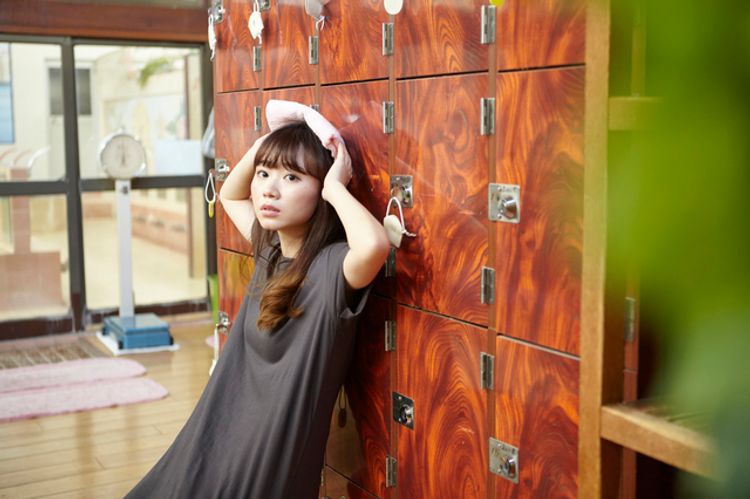
Why, yes, you can. The bathwaters at sento are regularly changed and chlorinated, so as long as you make sure to thoroughly clean your privates before and after the baths, there should be no problem. If you’re really worried, you can wear a tampon or menstrual cup to stem the flow.
In fact, some Japanese say that the warm waters are excellent for those on their period, as they can relax the muscles and reduce period pain. Those with period pains are recommended to soak for at least 20 minutes to receive the maximum benefits imparted by the water.
Just note that this does not apply to all sento, so we recommend confirming with the sento in advance.
■ Are People With Tattoos Allowed Into Sento?

Unfortunately, many sento restrict entry to those who have tattoos. The reason behind this restriction dates back to a time in Japan when tattoos were used to mark criminals. Although the practice of branding outlaws with ink is no longer in practice, the negative image remains in the public consciousness and can make other bathers feel uncomfortable.
Some baths allow small tattoos, although they may ask you to cover them with an adhesive bandage, while many will refuse entry completely. Sento in tourist-heavy areas may be a little more lenient, but it’s always best to check ahead.
Experience a New Side to Japan by Visiting a Sento!
Going to the sento after a long day can be a great way to relax and revitalize your body. While the custom of bathing in the buff with complete strangers may feel a bit strange at first, once you get into the bath, any inhibitions you may have will quickly wash away. So, cast aside your reservations and don’t miss your chance to experience Japanese bathing culture at a sento!
If you want to give feedback on any of our articles, you have an idea that you’d really like to see come to life, or you just have a question on Japan, hit us up on our Facebook!
The information in this article is accurate at the time of publication.
